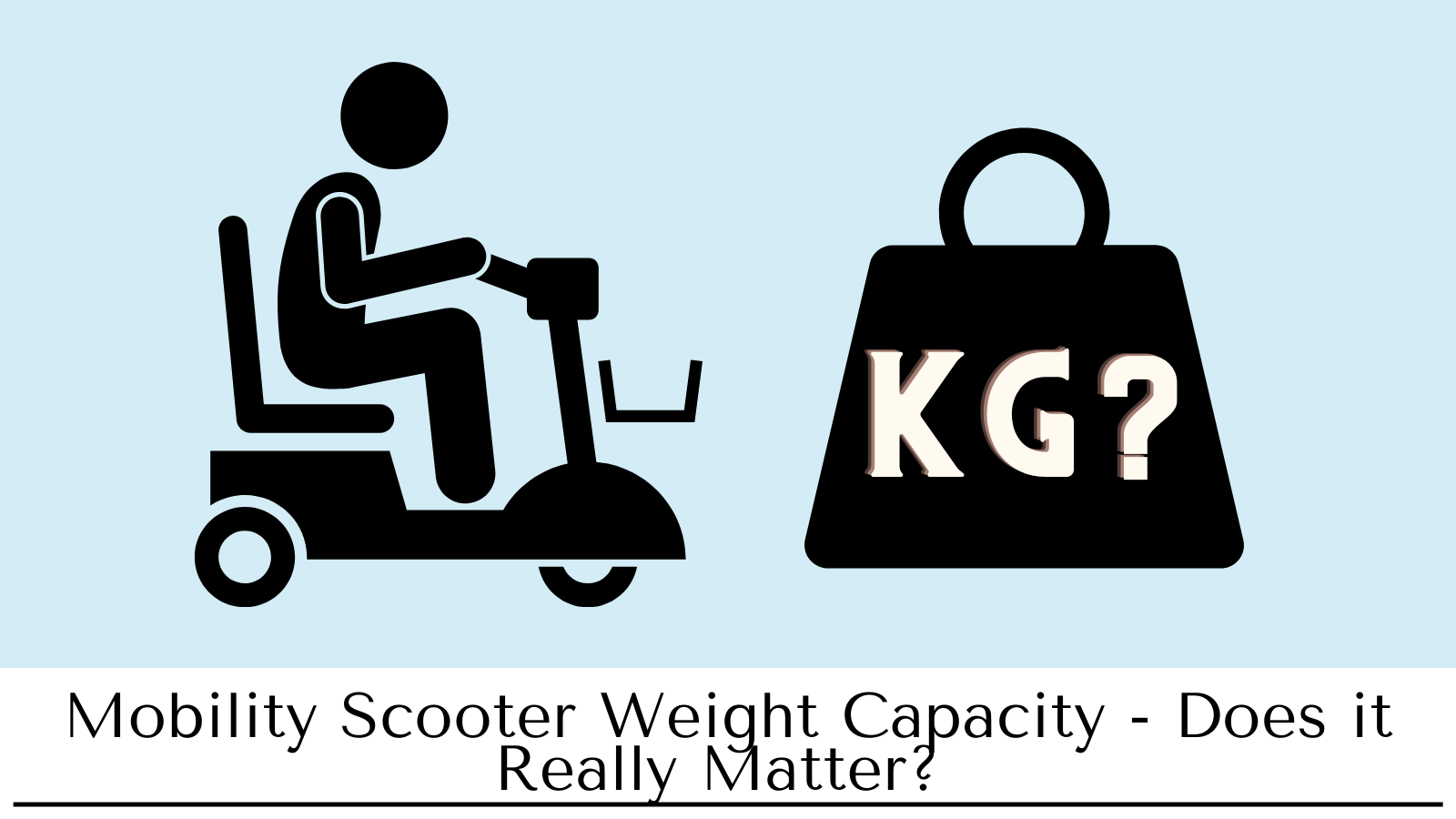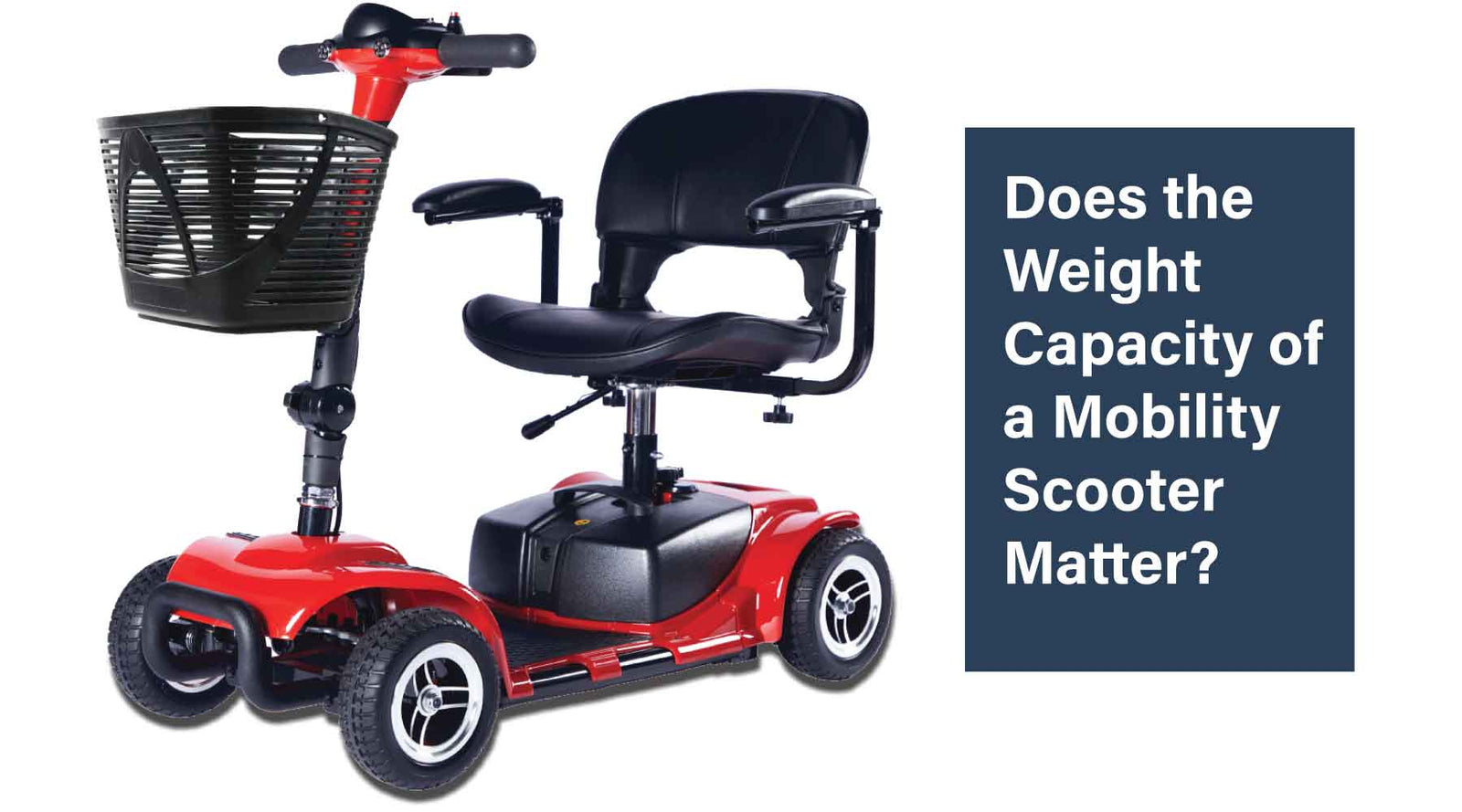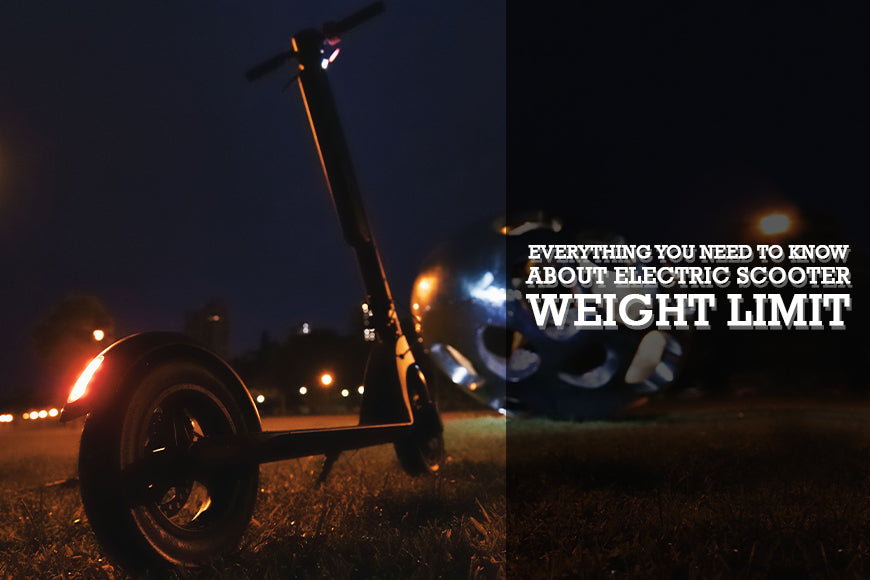Yes, the weight limit on an electric scooter matters significantly. Exceeding it can impact performance and safety.
Electric scooters are a popular choice for urban commuting due to their convenience and eco-friendliness. Each scooter model comes with a specified weight limit, which is crucial for optimal performance. Exceeding the weight limit can result in reduced speed, shorter battery life, and potential damage to the scooter.
It can also pose safety risks, such as compromised braking efficiency and stability. Understanding and adhering to the weight limit ensures a smoother, safer ride and prolongs the scooter’s lifespan. Therefore, always check the manufacturer’s guidelines before purchasing or riding an electric scooter.
Weight Limit Basics
Understanding the weight limit of an electric scooter is crucial. It affects safety and performance. Let’s dive into the basics.
What It Means
The weight limit is the maximum weight a scooter can handle. This includes the rider and any cargo. Exceeding this limit can cause damage. It might also reduce battery life and speed.
Common Limits
Most scooters have different weight limits. Here are some typical ranges:
- Kids’ scooters: 100 to 120 lbs
- Teen scooters: 150 to 180 lbs
- Adult scooters: 200 to 220 lbs
- Heavy-duty scooters: 250 to 300 lbs
Always check the manual. It provides the exact weight limit. Also, note that weight limits affect more than just the frame. Motor power and battery range are impacted too.

Credit: isin-wheel.com
Impact On Performance
The weight limit on an electric scooter affects its performance. It influences speed, battery life, and overall efficiency. Exceeding the weight limit can cause the scooter to work harder, resulting in reduced performance.
Speed Reduction
Speed is crucial for an exciting ride. Carrying more weight than recommended reduces speed. The motor has to work harder to move the extra load. This can cause the scooter to slow down significantly.
Riders may find it hard to reach top speeds. This can be frustrating for those who enjoy fast rides. Even a small increase in weight can impact speed.
Battery Drain
Battery life is another critical aspect. Extra weight can drain the battery faster. The scooter needs more power to carry the added load. This means shorter rides and more frequent charging.
Over time, this can reduce the overall lifespan of the battery. Riders may need to replace the battery sooner than expected. Keeping within the weight limit helps maintain battery health.
Safety Concerns
Electric scooters are fun and practical. Yet, safety is crucial. Weight limits play a vital role in keeping riders safe. Ignoring these limits can lead to accidents and damage.
Structural Integrity
Structural integrity is essential for electric scooters. Scooters are designed to support a specific weight. Exceeding this weight can damage the frame. Cracks and breaks can occur over time. This makes the scooter unsafe to ride.
Manufacturers test scooters for maximum weight. They ensure the frame and materials can handle stress. Respecting the weight limit prolongs the scooter’s life. It also keeps the rider safe from unexpected failures.
Braking Efficiency
Braking efficiency is vital for rider safety. Electric scooters have brakes designed for specific loads. Overloading the scooter affects how well the brakes work. The scooter may not stop as expected. This increases the risk of accidents.
Proper braking ensures control during emergencies. Always check the scooter’s weight limit. This helps maintain optimal braking performance. It keeps both the rider and others on the road safe.
Manufacturer Guidelines
Understanding the manufacturer guidelines for electric scooters is crucial. These guidelines ensure optimal performance and safety. Ignoring them can lead to accidents and damage.
Recommended Limits
Every electric scooter has a recommended weight limit. This limit is set by the manufacturer. It ensures the scooter operates safely.
- Most scooters support up to 220 lbs (100 kg).
- Heavy-duty models can support up to 330 lbs (150 kg).
- Children’s scooters often have a lower limit, around 120 lbs (55 kg).
It’s essential to check the user manual for specific limits. Exceeding the recommended weight can affect performance. It can also shorten the scooter’s lifespan.
Warranty Issues
Exceeding the weight limit can void the warranty. Manufacturers often state this clearly in the guidelines. They will not cover damage caused by overloading.
| Weight Limit | Warranty Status |
|---|---|
| Within limit | Warranty remains valid |
| Exceeds limit | Warranty voided |
Always adhere to the recommended weight limit. This ensures your scooter remains under warranty.
Following manufacturer guidelines is vital. It keeps you safe and protects your investment.
Rider Experience
Electric scooters are a fun way to get around. They are easy to use and good for short trips. But does the weight limit matter? Yes, it does! Weight affects comfort, handling, and stability.
Comfort Levels
Comfort is important for a good ride. A scooter with a high weight limit will feel better. You will have a smoother ride. Your back and legs will not hurt. The seat will be more comfortable.
On the other hand, if you are too heavy for the scooter, you will feel every bump. The ride will be bouncy. You may get tired quickly.
Handling And Stability
Handling is how easy it is to control the scooter. A scooter with a good weight limit handles better. It will be easier to turn and stop. You will feel in control.
Stability keeps you safe. A scooter with the right weight limit is more stable. It will not tip over easily. You can ride on different surfaces with confidence.
| Weight Limit | Comfort | Handling | Stability |
|---|---|---|---|
| Within Limit | Smooth Ride | Easy Control | Very Stable |
| Exceeds Limit | Bumpy Ride | Hard to Control | Less Stable |

Credit: bettyandbertie.com
Customizing For Heavier Riders
Electric scooters are popular for their convenience and eco-friendliness. But many scooters have weight limits that can be a concern for heavier riders. Customizing an electric scooter can help make it more suitable and safe for heavier users.
Upgraded Parts
Upgrading parts can increase the weight capacity of an electric scooter. Stronger suspension systems provide better support for heavier riders. Heavy-duty tires offer improved stability and grip. Larger batteries ensure longer rides without compromising speed.
| Part | Upgrade Benefit |
|---|---|
| Suspension | Better support and comfort |
| Tires | Enhanced stability and grip |
| Battery | Longer rides |
Alternative Models
Some electric scooter models are designed for heavier riders. These models come with higher weight limits and stronger frames. They often feature reinforced decks and more powerful motors.
- Model A: Weight limit of 300 lbs, reinforced frame.
- Model B: Weight limit of 350 lbs, larger battery.
- Model C: Weight limit of 400 lbs, heavy-duty tires.
Choosing the right model ensures a safe and enjoyable ride for heavier users. Consider the weight limit and other features to find the best fit.
Legal Implications
Understanding the legal implications of weight limits on electric scooters is essential. These limits affect your safety, compliance, and even your insurance coverage. Let’s dive into the details under the following subheadings.
Local Regulations
Each city has unique regulations for electric scooters. These rules often include weight limits. Check your local laws to avoid fines and penalties.
For example, some cities impose a maximum weight limit of 220 lbs. Exceeding this limit can lead to a ticket. Knowing and following these rules ensures a smoother ride.
Insurance Policies
Insurance policies for electric scooters often include weight restrictions. Exceeding the weight limit may void your coverage. Always read your policy details carefully.
Below is a table summarizing common weight limits and their impact on insurance:
| Weight Limit (lbs) | Insurance Impact |
|---|---|
| Up to 220 lbs | Full Coverage |
| 221-250 lbs | Partial Coverage |
| Above 250 lbs | No Coverage |
Sticking to the recommended weight limits ensures your insurance remains valid. This protects you in case of an accident.

Credit: www.zipr.com
Future Trends
The future of electric scooters is bright and exciting. Technological advancements and market adaptations are shaping the evolution of these eco-friendly vehicles. Understanding the importance of weight limits is crucial for users and manufacturers alike.
Technological Innovations
Electric scooters are getting smarter and more efficient. New battery technologies are increasing range and reducing charging time. Enhanced motors are providing better performance, even for heavier riders.
Lightweight materials like carbon fiber and advanced alloys are making scooters stronger and lighter. These materials help accommodate higher weight limits without compromising durability.
Smart sensors and IoT integration are also on the rise. These innovations allow real-time monitoring of weight and performance. Riders can get instant feedback and adjust their riding habits for optimal performance.
Market Adaptations
Manufacturers are responding to consumer demands for higher weight capacities. New models are being designed to support up to 300 lbs or more. This shift is making electric scooters accessible to a broader audience.
Customizable options are becoming more popular. Riders can choose scooters with adjustable suspension and larger decks. These features enhance comfort and safety for heavier riders.
Rental services are also evolving. Companies are offering scooters with higher weight limits in their fleets. This adaptation ensures that everyone can enjoy the convenience of electric scooters.
| Feature | Benefit |
|---|---|
| New Battery Technologies | Longer range, quicker charge times |
| Lightweight Materials | Higher weight capacity, more durability |
| Smart Sensors | Real-time weight and performance monitoring |
| Customizable Options | Enhanced comfort and safety |
| Rental Service Adaptations | Accessible to a broader audience |
The future of electric scooters looks promising. With technological innovations and market adaptations, weight limits will continue to be less of a concern.
Frequently Asked Questions
What Happens If You Exceed The Max Load On An Electric Scooter?
Exceeding the max load on an electric scooter can damage the motor, reduce battery life, and cause safety hazards.
How Much Weight Can An Electric Scooter Handle?
Electric scooters typically handle between 220 to 300 pounds. Always check the manufacturer’s specifications for exact weight limits.
Does Weight Affect Electric Scooter?
Yes, weight affects electric scooters. Heavier riders may experience reduced speed, decreased range, and increased wear on the scooter.
What Happens If You Put Too Much Weight On A Scooter?
Exceeding the weight limit on a scooter can damage its frame and motor. Reduced performance and safety risks may occur. Always check the manufacturer’s weight guidelines.
Conclusion
Weight limits on electric scooters are crucial for safety and performance. Always check the manufacturer’s guidelines. Exceeding the limit can cause damage and accidents. Choose a scooter that supports your weight for a smooth ride. Prioritize your safety and ensure a longer lifespan for your electric scooter.

